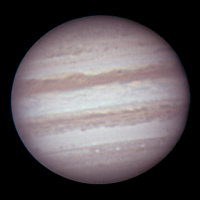Today the planet Neptune will pass through opposition, directly opposite the Sun in our sky. The planet will be well placed for observation all night long, rising at sunset, transiting at midnight, and setting at sunrise. If you are looking to observe Neptune, it is currently shining at magnitude 7.8 in southern Pisces just south of the circlet .

As the outer planets Uranus and Neptune move so slowly across the sky, the timing of oppositions is driven by the Earth’s orbit and occur each year at nearly the same time. Neptune’s orbital period is 164.8 years, taking over a century and a half to circle the celestial globe once. As Neptune was discovered in 1846, it has completed a little over one orbit since discovery.




